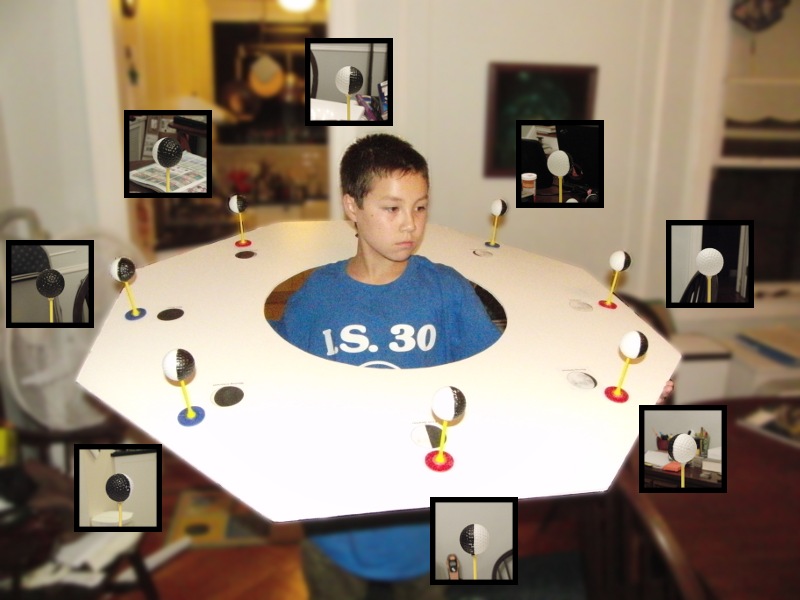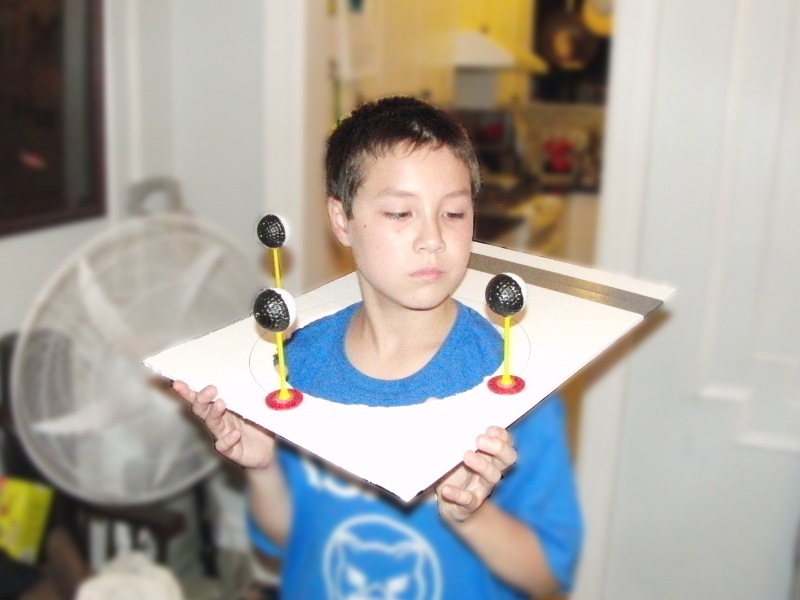 Science Daily: Uranus
Science Daily: Uranus
- New images reveal what Neptune and Uranus really look like January 5, 2024
- Ringing in the holidays with ringed planet Uranus December 19, 2023
 Science Daily: Pluto
Science Daily: Pluto
- How Pluto got its heart April 15, 2024
- Evidence of geothermal activity within icy dwarf planets February 15, 2024
 Science Daily: Kuiper Belt
Science Daily: Kuiper Belt
- How Pluto got its heart April 15, 2024
- Evidence of geothermal activity within icy dwarf planets February 15, 2024

I originally built these models a couple of years ago, but didn’t realize it was something “novel” until I got some comments at this past year’s NEAF where I had brought them for the children’s section. Quite frankly, I think it works well with adults, too, as I’ve heard some well-educated adults propagating common misconceptions about what causes the phases of the moon. The idea is simple enough. One side of the moon is illuminated by the Sun, the other is not. As the moon goes around the Earth, the relative geometry of the Earth, Moon, and Sun changes, but the half of the moon facing the Sun is always illuminated and the other half is not. So, we create a 3D model where you can put your head in the place of the Earth and look at the moon at different positions in its orbit. Here’s my son Matthew modeling the model.


Written by Roland Roberts
Search
.Archives
- April 2024 (3)
- September 2022 (5)
- April 2022 (1)
- January 2022 (3)
- December 2021 (4)
- September 2021 (3)
- July 2021 (1)
- January 2021 (1)
- November 2020 (2)
- October 2020 (2)
- September 2020 (2)
- August 2020 (5)
- July 2020 (1)
- November 2019 (2)
- September 2019 (1)
- August 2019 (2)
- September 2017 (1)
- August 2017 (1)
- September 2015 (3)
- August 2015 (2)
- June 2015 (5)
- May 2015 (3)
- May 2013 (2)
- January 2013 (1)
- December 2012 (2)
- September 2012 (1)
- June 2012 (1)
- May 2012 (1)
- October 2011 (2)
- September 2011 (2)
- April 2011 (2)
- March 2011 (10)
- January 2011 (8)
- November 2010 (2)
- October 2010 (1)
- September 2010 (3)
- August 2010 (2)
- July 2010 (1)
- June 2010 (1)
- April 2010 (3)
- February 2010 (3)
- January 2010 (3)
- December 2009 (6)
- November 2009 (3)
- October 2009 (7)
- September 2009 (8)
- August 2009 (4)
- July 2009 (1)
- June 2009 (2)
- May 2009 (2)
- April 2009 (7)
- March 2009 (1)
- February 2009 (6)
- January 2009 (4)
- December 2008 (4)
- November 2008 (3)
- October 2008 (11)
- September 2008 (4)
- August 2008 (5)
- July 2008 (5)
- June 2008 (2)
- April 2008 (4)
- March 2008 (18)
- February 2008 (9)
- November 2007 (1)
- October 2007 (3)
- July 2007 (3)
- April 2007 (1)
- March 2007 (6)
- February 2007 (3)
- December 2006 (3)
- October 2006 (4)
- September 2006 (1)
- July 2006 (5)
- May 2006 (10)
- April 2006 (9)
